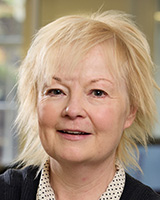Does the mobile market need additional sub-1GHz spectrum?
27 May 2025 | Regulation and Policy
Janette Stewart | Gentiana Shiko
Article | PDF (3 pages) | Spectrum
There is a range of possible solutions for improving mobile coverage and capacity in rural areas in Europe. Technological progress is making complementary technologies such as direct-to-device (D2D) satellite communications more viable, but there are also solutions within mobile networks that can enhance the capability of existing cellular infrastructure. Expanding access to the right frequency bands can help operators close coverage and capacity gaps.
For mobile operators, deploying more spectrum below 1GHz is an attractive option for rural mobile use, as it is cost-effective for providing wide-area coverage. For regulators and policy makers, making more spectrum available below 1GHz for mobile use requires a change in use of existing bands, since the bands most likely to be of interest for mobile use (for example, around 600MHz) are currently used for digital terrestrial television (DTT) in European markets.
2G mobile networks were largely built on sub-1GHz spectrum, such as in the 850MHz and 900MHz bands. The advent of 4G and then 5G has introduced further sub-1GHz spectrum, such as 700MHz and 800MHz. Policy makers and the wireless industry are discussing whether additional spectrum in the 600MHz band will be needed for future mobile use, and what the additional spectrum needs might be (what bandwidth, for what purpose, and over what timing). The 600MHz band has traditionally been used for analogue and, subsequently, digital terrestrial TV transmission. However, in some markets, 600MHz spectrum has already been repurposed for mobile networks. Those advocating for further spectrum assignment to mobile networks argue that using 600MHz for mobile could help narrow the connectivity and technology divide by improving rural connectivity since low-band spectrum like this enables wide-area coverage with fewer base stations. Additionally, expanding mobile access to this band could help accommodate growing data traffic across all users, not just those in urban areas where most spectrum resources are currently concentrated. However, policy makers must consider how the current use of spectrum for DTT might change over the remainder of this decade, and the long-term strategy for live television distribution. The attractiveness of DTT lies in its wide geographic footprint meaning that it reaches most homes in European markets where it has been deployed.
Policy makers are seeking universal voice, data and broadband, but also universal access to free-to-air TV services
Policy makers can consider an array of funding and deployment approaches to extend the reach of broadband and mobile networks into hard-to-reach areas, but despite various initiatives in place currently, ubiquitous high-speed coverage remains out of reach in many markets.
In urban areas, mobile networks use a mix of spectrum bands and network layers (with additional capacity provisioned as demand rises by splitting macro cells or by adding additional cell layers such as small cells). Such solutions have limited scope in hard-to-reach areas. It is generally acknowledged in the wireless market that low-frequency spectrum is the best option for meeting traffic demand in harder-to-reach locations and is also good for providing in-building penetration. As a result, sub-1GHz spectrum is likely to be in high demand for supporting mobile traffic demand in rural locations.
When determining optimal allocations and planning for a change in use of given spectrum bands, policy makers must weigh up the possible alternative uses of the spectrum. As digital terrestrial TV technology and consumption mature, the optimal methods for distributing TV content are also changing, in terms of transmissions technologies and infrastructure. Once high-speed broadband is universal, TV distribution can be delivered to homes via fibre broadband (especially as viewing patterns are shifting towards internet-based consumption). Other wireless options (for example, satellite) also exist that might be suitable to deploy in ultra-high frequency (UHF) spectrum. There is also consideration of new dedicated forms of TV transmission such as via 5G broadcast technologies, using similar spectrum to that of the current digital terrestrial television (DTT) networks.
Shifting digital terrestrial TV transmission out of the 600MHz band (for example, by accommodating DTT networks in spectrum below 614MHz) would free up the spectrum for alternative uses. Previous ‘digital dividend’ policies have enabled 800MHz and 700MHz bands to be changed in use from digital TV, for 4G and 5G.
Sub-1GHz spectrum is more cost-effective for rural connectivity, but deployment costs remain high relative to population covered
Sub-1GHz is already widely used in mobile networks worldwide. The 700MHz, 800MHz, 850MHz and/or 900MHz bands are already in widespread use and have been deployed extensively across legacy (2G/3G) and current (4G/5G) networks. As well as supporting voice and data services for consumers, these bands are also used for connecting IoT devices, either over wide areas, or located indoors (for example, smart meters).
While the propagation characteristics of sub-1GHz spectrum make it a desirable choice for mobile networks for connecting rural areas, such sites are nonetheless costly to set up and run due to their location and distances involved for backhaul and power connections. Hence, sub-1GHz spectrum is cost-effective compared to alternatives in these areas, but the running costs of networks in rural areas is still high.
Sufficient bandwidth of contiguous sub-1GHz spectrum may be important for MNOs
While the coverage properties of sub-1GHz spectrum are good, the bandwidth available in sub-1GHz bands is limited, compared to higher bands. This creates two problems, which additional sub-1GHz spectrum such as in 600MHz can help to address:
- Unbalanced spectrum resources mean unbalanced user experience: The assignment of significant mobile bandwidths in higher bands (such as 2.6GHz and 3.5GHz) is creating a disparity in the spectrum available to MNOs in different bands. When using sub-1GHz bands, the user experience (for example, mobile data speeds) is inferior because of spectrum constraints. This disparity in experience can be expected to grow over time if the status quo persists (that is, the amount of sub-1GHz spectrum is not increased).
- Limits on sub-1GHz spectrum constrain the capacity of the whole network: A fixed grid of macro sites is typically able to carry around 80% of traffic using spectrum above 1GHz, with the remaining 20% carried via sub-1GHz spectrum, based on our typical benchmarks. When traffic volumes increase, the capacity available in sub-1GHz spectrum becomes a limiting factor, because these frequencies needs to prioritise serving the 20% of traffic not reachable by other frequencies. If capacity is insufficient, MNOs need either to densify the site grid absent of adding more sub-1GHz (no amount of spectrum in bands above 1GHz on the existing macro site grid will help) or networks become unable to serve all of the demand; neither is a good outcome.
For further advice on costs and benefits of different policies on future use of UHF spectrum, contact Janette Stewart or Mark Colville.
Article (PDF)
DownloadAuthors

Janette Stewart
Partner, expert in spectrum policy, pricing and valuation
Gentiana Shiko
ManagerRelated items
Article
A changing spectrum landscape offers new opportunities for creative financial sponsors
Article
New thinking on spectrum valuation is needed for upper mid-band frequencies
Article
Why spectrum renewal policy matters for network investment and service quality

